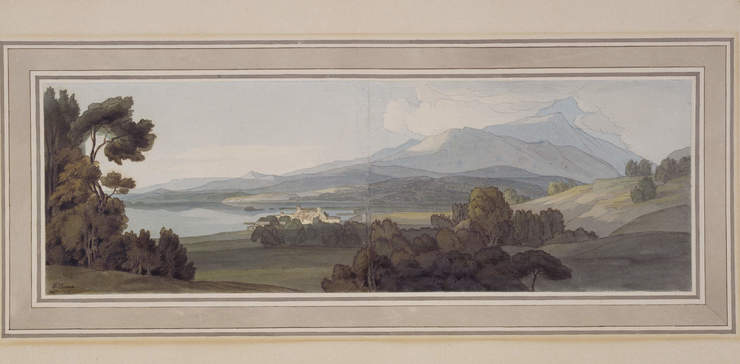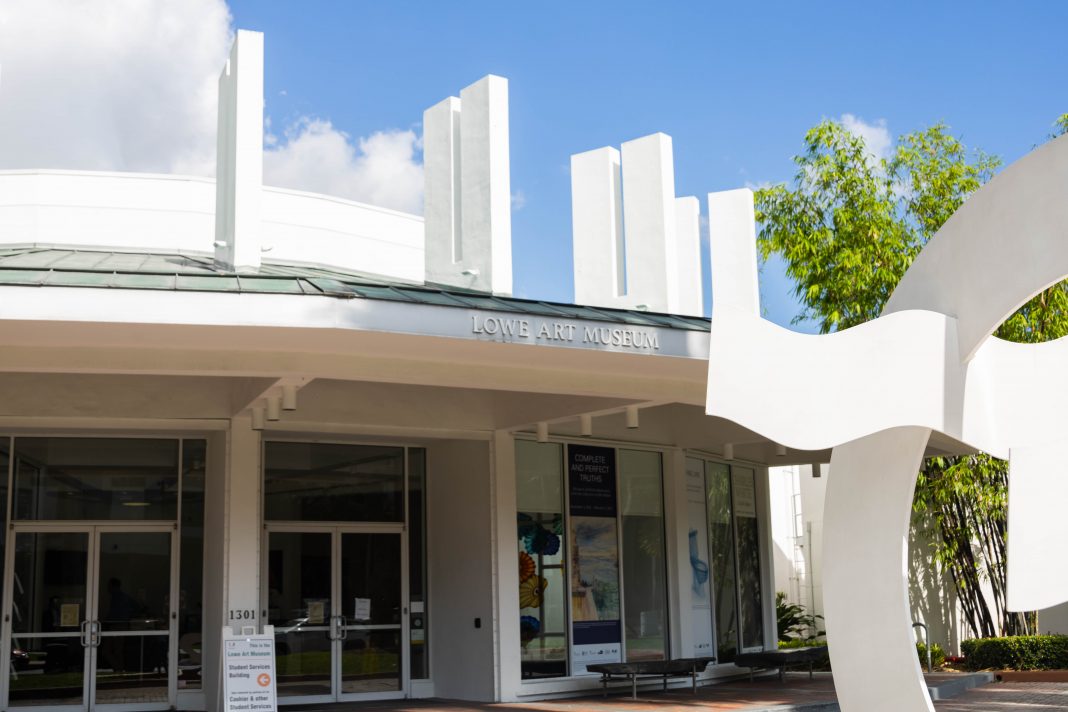Rachel Lambert Mellon, better known as Bunny Mellon, was many things throughout her life — socialite, philanthropist and gardener — but she is best remembered for her proclivity for gardening. Her talents were recognized with one of the highest national honors when she redesigned the White House Rose Garden at the request of President John F. Kennedy.
The Lowe Art Museum’s current exhibit, “Complete and Perfect Truths: 200 Years of British Watercolors” from the Collection of BNY Mellon, showcases another side of Bunny Mellon: her love for art. Not only did Bunny Mellon have a talent for gardening, but she also had an eye for spotting great works: this exhibit is composed of almost 70 pieces from Mellon’s private collection.
The Miami Hurricane has compiled a list of featured pieces that highlight pivotal parts of Great Britain’s history within these 200 years.
Francis Towne
Francis Towne was a landscape and watercolor painter, whose works featured picturesque places in Europe, including Rome, Naples and England. Towne’s works are simple, but will take you back in time.
Francis Towne’s “Lake of Windermere from Ambleside,” 1786 provides its viewers with a feeling of tranquility. Towne captured the English Lake District’s reputation as a place for tourists and artists. The people depicted and the scenic view tells a larger story, one of a place that has remained tranquil, despite the urban cities of England becoming industrialized. “Lake Windermere from Ambleside’s” serene palette and still water portrays the beauty of this setting.

Works from the Camden Town Group
It is quite appropriate that part of Bunny Mellon’s “Complete and Perfect Truths” consists of works from the Camden Town Group. Around 1907, a group of artists with different viewpoints formed a circle, choosing to focus on their similarities. This group had an interest in capturing the mundane through color schemes and scenery.
Robert Bevan’s “Marlpits,” Luppitt, 1921 illustrates the purpose of the Camden Town Group and what these artists aspired to achieve. The cottage featured in Bevan’s work is beautiful, yet simple. Bevan treasured his time in the West Country and bought Marlpits Cottage in Luppitt after spending nearly a decade visiting the West Country. Bevan’s illustration of his cottage and its views shows a shift in culture, where it was now in vogue to capture simple living.
Along with Robert Bevan, Charles Ginner played a pivotal role in the origins of the Camden Town Group. Ginner’s “Mayfair,” 1920 is reminiscent of the Ashcan School, which was popular in America at the time. Just as works from the Ashcan School documented the lives of recent immigrants (Jewish, Italian and Irish) far from Park Avenue in the Lower East Side, Ginner’s “Mayfair” captured the industrial side of the city.
Ethelbert White
Wood engraver Ethelbert White had works exhibited at the Royal Academy and possessed a talent for watercolor. “Complete and Perfect Truths” features a few of White’s works, which tell another tumultuous story of England in the early twentieth century.
Ethelbert White’s “Parade,” 1919-21, looks like an illustration from a magazine and conveys a spectacle. At the time White worked on Parade, Great Britain had emerged victorious (along with the other allies) from the Great War but won at great costs. This simple work reflects a significant action taking place, yet a feeling of exhaustion is present, as the creature on the right is sleeping.
“Contes Russes,” c. 1919-21, is a work of White’s that looks like it appeared in a children’s book. The title of this work translates to “Russian Tales,” which features different emotions throughout the painting. “Contes Russes” features a pop of color and is worthwhile to observe, as there are a plethora of details within the subjects.
“Complete and Perfect Truths: 200 Years of British Watercolors” is showing at the Lowe Art Museum now through Feb. 5, 2023.






